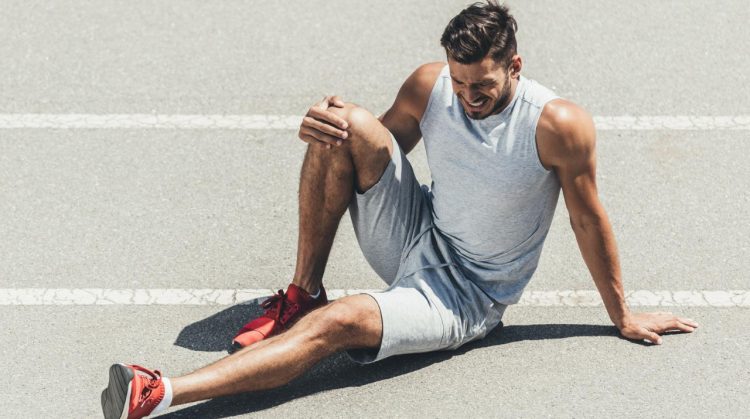
June 8, 2021
Tips for Joint care while at Home

Osteoarthritis (OA) is the most common form of arthritis, affecting millions of people worldwide.There are protective tissues present at the end of the bones known as ‘Cartilage’. The cartilage breaks down in the case of Osteoarthritis (In Greek, ‘osteos’ means bones) which causes friction in the bones as the bone-ends start rubbing each other at the joint which results in causing pain, stiffness, and other symptoms. This condition is most commonly found in old-aged people as their joints are weak. It is quite painful as the person suffering from this is unable to walk amply or make free movements. They are more vulnerable to other possible joint problems relating to knee and leg-joints.
At some point in their lifetimes, knee osteoarthritis may affect about 45% of people. There might be multiple reasons, but the exact cause behind the disease is still unknown. However, experts do share their opinions on how several under mentioned risk factors which increase the chances of developing knee osteoarthritis.
As age advances, the chances of developing Osteoarthritis increases. Knee cartilages become quite inflexible and weak, making the patients’ knees more likely to be thinning and knee damage. Research shows that about 19% of people over the age of 45 years and 37% above the age of 60 have knee arthritis. The Osteoarthritis is seen on the x-ray of the patients’ knees even though the patient might not have visible symptoms.
Knees are termed as the weight-bearing joints in our body. If a patient is suffering from obesity, then they are twice likely to contract Osteoarthritis. It is known that obesity may contribute towards OA, as obesity is associated with low-grade, body-wide inflammation. When the BMI of a person is ≥ 30, he/she is obese.
A damaged knee joint eventually leads to knee Osteoarthritis. Damage might be due to a severe injury, broken bone, or surgery. After the injury, no symptoms might be noticed for years. Patients with a history of injury are more likely to contract Post-traumatic Arthritis, which is a type of Osteoarthritis.
Genes too play a role in developing knee Osteoarthritis as similar to height and hair colour. If a woman’s knee was suffering from knee Osteoarthritis, it is highly likely that the woman would also contract OA. The exact extent of genetic factors is yet unknown, but experts estimate 40-60% of knee arthritis cases might be influenced by genetics.
If a patient is already suffering from bone mal-alignment, metabolic disorder, septic or gout disorder, and any other congenital conditions, it is likely that the patient might develop Osteoarthritis of the knee.
Activities and jobs which require people to be on their feet to do heavy lifting works while standing, crawling, or even squatting, may experience mini traumas. As time passes by, these mini traumas lead to Osteoarthritis of knees. Athletes of high-impact sports, such as basketball or tennis, also have chances of Osteoarthritis.
Too much stress or too little stress on knee-joint, both cases lead to knee arthritis. For the knee-cartilages to function and repair naturally, it must be exposed to weight-bearing stress. Movement facilitates the circulation of joint fluid throughout the knee joint, as this fluid is filled with nutrients.
More stress is put on the knee cartilage and underlying bone when the hamstring, quadriceps, and calf muscles are weak.
According to experts, women are 40% more prone to develop Osteoarthritis in the knee in comparison to men.
Researchers have observed explicit biochemical changes that occur in knee joints suffering from Osteoarthritis. Whether these changes are the cause or effect of the Osteoarthritis process, it is not clear yet.
The above risk factors are not absolute, but they do increase the chances of developing knee Osteoarthritis. A person with only one factor might develop it while a person with several factors never develops it.
The most common symptoms of Osteoarthritis are-
The pain associated with Osteos intensifies in the advanced level of this disease. Swelling in the joint and its nearby areas increases over time. For better management of Osteoarthritis, one must recognize its early symptoms.
There are five stages in Osteoarthritis as it is a progressive condition, ranging from 0 to 4. The conditions become severe with the advancement in stages. A standard joint problem is seen in the first stage(0). Stage 4 has severe Osteoarthritis patients. There is no hard-and-fast rule that anyone who is at stage 0 may progress to up at stage 4 as this condition often stabilizes long before reaching the final stage.
When Osteoarthritis progresses to advanced stages, there is extensive or at times a complete loss of cartilage in the patients’ joint(s). This results in increased pain, decreased range of motion, swelling and inflammation of the joints is also elevated.
UCLA rheumatologist,Geraldine Navarro, MD, discusses the symptoms and diagnosis of osteoarthritis and explores treatment options, including lifestyle modifications.
Exercise provides various benefits to people suffering from knee arthritis, including:
1) Exercise reduces pain- Exercise helps in strengthening muscles, and stronger muscles help to support joints. The knee becomes stable by exercising the muscles surrounding the knee like hamstrings, quadriceps, and other muscles. Also, the bones experience less impact during weight-bearing exercises, which in turn reduces pain. Exercise also releases the body’s natural painkillers, i.e. endorphins.
2) Studies have proven that people who participate in land-based exercise and strength training routines observed a reduction of their knee pain from 10 to 15% lower than people who do not exercise. This reduction makes a major difference as it decides whether the patient needs pain medication or not.
3) Increased range of motion and function in the joints. Pain discourages a person from being active(thus making him/her sluggish). It leads to stiffness of joints and weak muscles, which causes even more pain. Regular exercise increases knee functioning by helping the knee joint, and surrounding muscles remain flexible and active.
4) Knee functioning can improve by approximately 10-20% by exercising regularly. In other words, the patient can see tangible movements like bending knee easily, walking a longer distance effortlessly, and comfortably sit and get-up without facing much pain in the knee.
5) Improve in cartilage health- Free motion and a certain amount of weight-bearing stress on the joint cartilage keeps it healthy. Just like water in a sponge, in the same way, synovial fluid is stored in cartilage. When there is a motion in the joint, the cartilage gets squeezed. Synovial fluid is released from the cartilage, which delivers nutrients and lubrication to the rest of the joint.
6) Synovial fluid also creates a healing environment for the joint, thereby reducing inflammation and supporting the healthy functioning of the joint.
It is advised by the health-care providers to warm-up as a pre-exercise requirement and cool-down as a post-exercise requirement.
Before you exercise, you should ensure that you have a 10-minute warm-up activity.
A warm-up literally makes the body warm by increasing blood flow and making muscles flexible.
Slow-paced aerobic activity or simply a walk is enough for warm-up. People with severe arthritis can do a warm compress and gentle range-of-motion activities as a warm-up.
There are chances that knees might have swollen and become achy after the workout. Certain steps could be taken to overcome this, such as elevating or applying ice to the knees with a cold compress (a bag of frozen peas might help you out!).
For improving the function and mobility, perform the below-mentioned exercises regularly:
Physical therapy or physiotherapy helps to reduce the pain, swelling, and stiffness of the knee, and it can help improve the functioning of the knee joint. It also makes it easier for you to walk, bend, kneel, squat, and sit. The two main types of physical therapy include passive and active treatment. It helps to make your knee osteoarthritis more manageable. In passive treatments, the physiotherapist does a majority of the work. But with active treatments, the patient does most of the work, such as at-home exercises.
In terms of managing the pain, both cold and heat can relieve you from swelling and joint pain. Heat can aid in easing pain and get your muscles to relax. Meanwhile, cold can relieve the aching muscles post exercises and also, decrease muscle spasms.
The most effective and proven way to cure early and moderate Osteoarthritis of joints is exercise. By exercising, all-cause mortality improves, and there is a decrease in risks associated with frailty, sarcopenia, muscle loss, and other risks. Various low impact exercises will help increase your strength and endurance. It will also help strengthen the muscles encasing your joints. Exercises mentioned in this blog will help you deal with pain and also aid in normalizing your life.